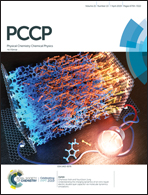Low linear energy transfer radiolysis of supercritical water at 400 °C: in situ generation of ultrafast, transient, density-dependent “acid spikes”
Abstract
There is growing interest in the radiation chemistry of supercritical water (SCW), as its use as a coolant in a nuclear reactor (Generation IV) is the logical evolution of the current (Generation III or less) water-cooled reactors. However, current knowledge about the potential effects of water radiolysis in a Gen-IV supercritical water-cooled reactor (SCWR) is incomplete. In this work, Monte Carlo track chemistry simulations of the low linear energy transfer (LET) radiolysis of SCW (H2O) at 400 °C are used in combination with a spherical “spur” model to study the effect of water density on the in situ radiolytic formation of H3O+ ions and the corresponding abrupt, transient, highly acidic pH response (“acid spikes”) that is observed immediately after irradiation. The magnitude and duration of this acidic pH effect depend on the water density in the considered range of 0.15–0.6 g cm−3. It is strongest at times less than a few tens of picoseconds with the pH remaining nearly constant at ∼1.6 and 1.9 for the highest (“liquid-like”) and lowest (“gas-like”) density, respectively. At longer times, the pH gradually increases for all densities and finally reaches a constant value corresponding to the non-radiolytic, pre-irradiation concentration of H3O+, due to the autoprotolysis of water. Our results show that the lower the density of the water, the longer the time required to reach this constant value, ranging from ∼50 ns at 0.6 g cm−3 (pH ∼ 5.6) to ∼1 μs at 0.15 g cm−3 (pH ∼ 8.5). The generation of these highly acidic pH fluctuations around the “native” radiation tracks, though local and transient, raises questions about the potential implications of this effect in proposed Gen-IV SCW-cooled reactors regarding corrosion and degradation of materials.



 Please wait while we load your content...
Please wait while we load your content...